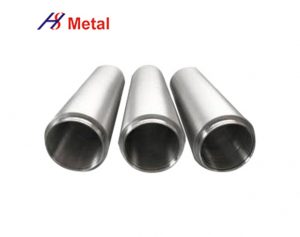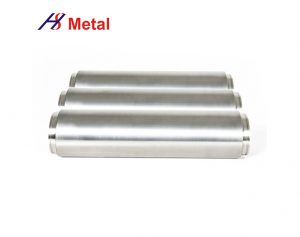We supply suitable tungsten and tungsten alloy sputtering targets for manufacturing electrochromic layers in smart windows. Our customers use these to manufacture the electrochromic tungsten oxide and tungsten alloy oxide layers for smart windows by means of reactive sputtering. In its normal state, this layer is colorless and transparent. Under DC voltage, it becomes blue and is therefore less transparent for certain wavelengths of light. By adding other elements (e.g., Ni, Mo, Ti, Ta) to the pure tungsten oxide layers, various properties of the switchable layers, such as resistance, switching time, and optical appearance, can be influenced.
Homogeneity and density: what needs to be taken into account with sputtering targets
One example of our tungsten alloys for smart glass is tungsten-nickel sputtering targets. Conventional tungsten-nickel targets are manufactured by means of a spraying process. The disadvantage of this approach is that the element nickel is not evenly distributed throughout and the material density of sprayed targets is usually in the range of < 95%.
But what does this mean for the user? Unevenly distributed nickel produces ferromagnetic areas of pure nickel in the sputtering target. These impair the sputtering behavior and affect the quality of the electrochromic layer as a result of uneven sputtering rates or a deviating chemical composition.
A low material density limits the possible strength of the sputtering target to just a few millimeters of usable material, which results in the frequent replacement of the sputtering target. We manufacture our tungsten-nickel sputtering targets by means of a powder metallurgical process. Every step of the manufacturing process, from the metal powder through to the finished product, is performed in-house at our own facility. With a density of over 95%, sputtering targets with a thickness of up to 18 mm can be produced from our material. The durability of our sputtering targets guarantees a longer service life throughout the application process. It is therefore no longer necessary to frequently replace the targets.
Our manufacturing process produces a particularly homogeneous and dense microstructure. This can be seen in the following light microscopic image of one of our tungsten-nickel sputtering targets: pure tungsten (dark gray) is embedded in a matrix of tungsten-nickel compounds. What is important, however, is what is not present: free nickel. The microstructure does not contain any ferromagnetic phases.
Nickel is distributed extremely homogeneously throughout the entire target. The nickel content fluctuates by a maximum of +/- 0.5 percent by weight around the desired mean value.









